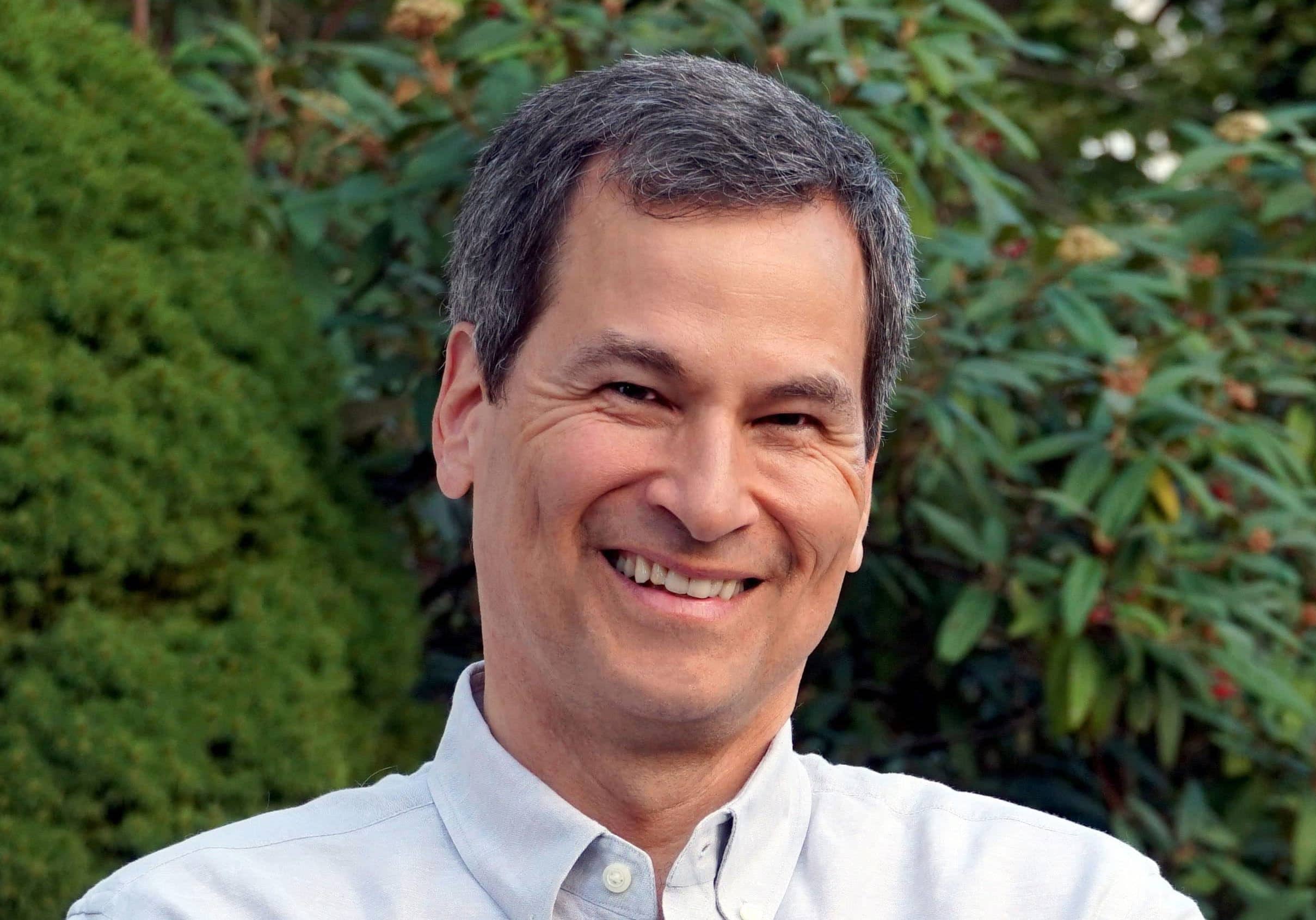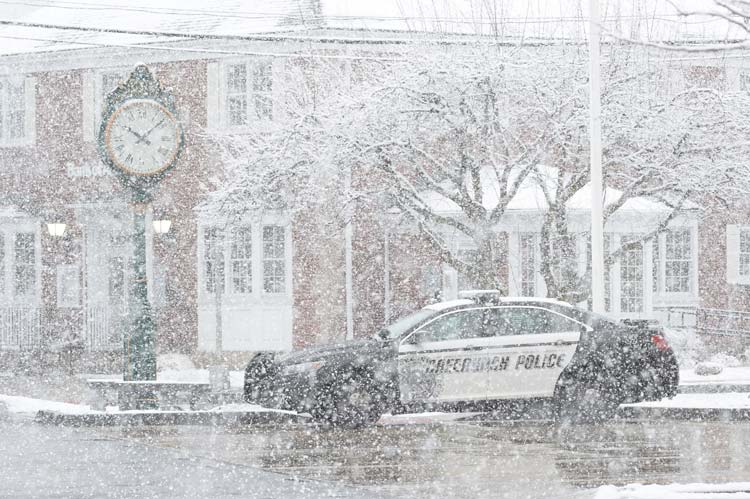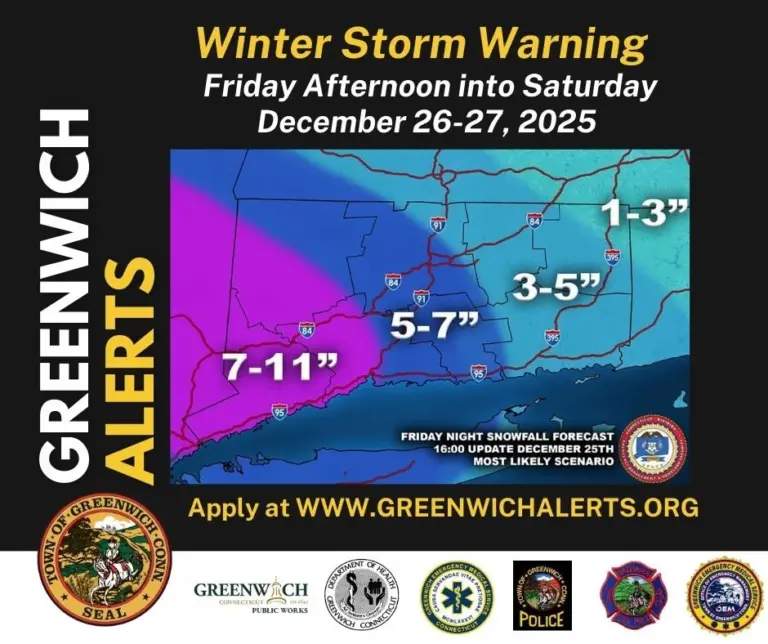
 By Anne Semmes
By Anne Semmes
David Pogue talks plain talk about that complex story of climate change. Pogue, who lives in Westport, has a voice for science, often hosting PBS Nova science specials and explaining away on Ted Talks. He now has a user-friendly book, “How to Prepare for Climate Change – A Practical Guide to Surviving the Chaos,” that was a riveting topic at a recent RMA talk.
His ability to simplify those key words of climate change, the greenhouse effect, began with a photo of two dogs in a car. “If we want to reach people, we should call it the dog-in-the- car- effect…how you come back to your car in the summer it’s like boiling inside. Same exact thing – trapped infrared energy reflected from the sun. In the climate analog – we are the dog.”
He then shared a graph that starkly showed the dramatic rise in the levels of C02. “And if we zoom in on the last 150 years, we’ll see that it really began about the time we began burning coal and oil with the Industrial Revolution.”
He has another term for global warming more inclusive, global weirding. “It’s heat waves,” his list begins, freak snowstorms, flooding, water shortages. historic rains, droughts. “We had the most hurricanes last season…Nature is a network of interconnected systems – you can’t turn one knob without affecting a bunch of other things.”
Addressing last year he said, “We were coping with COVID crisis, but the climate crisis did not slow down…2020 was tied for the hottest year ever reported on the planet. We also achieved the hottest temperature ever measured on the planet…over 130 degrees in Death Valley. We also had the most wildfires burning – the most areas in a season…five million acres burned, which is equal to the entire area of Connecticut, Delaware and Rhode Island. And another terrible wildfire season is coming up out west.”
So, just how many climate change deniers are out there he posed? According to an annual study by Yale Program on Climate Change Communication, there are 29 percent of Americans believing climate change is just a natural cycle. “That’s actually the lowest number it’s ever been in these surveys. Just as a point of comparison, remember that 20 percent of us believe that aliens walk among us.”
But Pogue quickly moved off to his “Practical Guide to Surviving the Chaos.”
So, how is that changing climate affecting us? “There’s an epidemic in this country of what’s called eco-despair or climate anxiety…After Hurricane Katrina, one in five residents are still suffering from PTSD…Since 2016 rates of depression are up 33 percent.” How to deal with this despair? Pogue’s’ “whole book is about taking action to sleep better at night.”
Like choosing wisely where one lives. “Forty million Americans move every year, especially in the pandemic. The basic guideline is you want to be inland far enough from the sea level rising and flooding.” Check out the “cool” website called, “Surging Seas” – https://sealevel.climatecentral.org/ “You plug in any address, and it’ll show you the water levels over time as the sea levels rise…Coastal Connecticut is not as bad as Miami. I would not be buying real estate in Miami…already they’re getting sunny day flooding 100 days a year, when it hasn’t been raining, when there hasn’t been a hurricane. And that happens because of the tides.”
“You want to be north far enough to escape the heat waves, as well as the mosquitoes and ticks that we’ve got here, and you want to be west enough to avoid the hurricanes, and you want to be east far enough to avoid the wildfires. And you need fresh water – the entire western half of the country is in more or less perpetual drought.”
Pogue picks 14 cities “basically above the 42nd parallel. The Great Lakes area, baby, that’s where it’s at – no hurricanes and wildfires, plenty of drinking water, no sea level rise. All those great old rust belt cities are expected to have this huge resurgence. Places with a lot of culture, art museums, symphonies, zoos, and hospitals, very important in the climate crisis era. Another option is Burlington, Vermont. It feels like a seaside town because it’s on Lake Champlain, a lake 500 miles long, no sea level rise, low obesity, highly educated, the lowest crime rate in the country, really big on cheese and maple syrup and ice cream. Ben and Jerry’s is nearby.”
How to invest in climate change? “When you invest in a clean energy focused company, you are helping to solve the problem. You’re making money at the same time. It turns out that 38 states, and growing now, have renewable energy mandates. They must get 50 percent of their power from renewable energy by 2030. Who stands to benefit from those laws? The utility companies, because they will be the people that the states are buying electricity from. So, companies like NextEra and Xcel Energy are good investments.”
And, with General Motors intending to phase out of gas cars in 14 years, Pogue shared, “It’s the companies that mine lithium that will be sitting pretty.”
Pogue instructed all RMA attendees to download the app, “Emergency,” pronto. “It’s free. It’s from the American Red Cross, and it’s really cool – you put in your address, or your children’s addresses, grandchildren’s addresses. If any disaster starts heading yours or their way it will come to life and start beeping and get your attention. even when the cell network is down, like where’s the nearest shelter, basic first aid, how to survive a flood or hurricane.
“Most experts also agreed that you should set up a go-bag. This is a backpack that you keep in the front closet with enough stuff in it, so that you can survive out of the house for a couple of days. So, snacks, first aid gear, flashlight…grab ID and cash, and any medicines. When another hurricane Sandy comes along and you’re told to evacuate, you don’t want to be at the end of the line of cars stuck in traffic trying to escape.”
But if you can’t, don’t forget your water heater. “There’s 40 or 80 gallons of clean fresh drinking water already within the walls of your own home. So, what you do is you shut off the intake at the top, and then you can pour out water from the bottom spigot, let it cool off, and you’ve got clean drinking water.”
And gear up against those ticks! “It turns out that the changing climate is not unpopular with everybody. Ticks love it. Tick territory is growing because the winters are not killing them…or killing off the deer.” Lyme Disease is increasing. “And the thing is you don’t always know that you’ve got Lyme disease.” So those 30,000 reported cases in the 1990’s could now be 300,000 cases a year. Stock up on DEET, use antibiotics quickly if you come down with Lyme – “you can cure it for good. When you get back from a walk, take off your clothes and throw them in the dryer – it kills whatever is on them.” To remove a tick, “Just take some tweezers, grab it by the head, pop it right out.’ And encircle your house/patio with nine feet of lawn. “Nine feet to them is like Death Valley, they can’t cross it.”
The last chapter of Pogue’s book is called, “Where to Find Hope.” It includes, “Look at the young people today…These people are going to replace us, and they feel very strongly about decarbonizing. I think it’ll take eight years or so, but I do believe we’ll get to a world that doesn’t burn coal, oil and gas anymore.”




